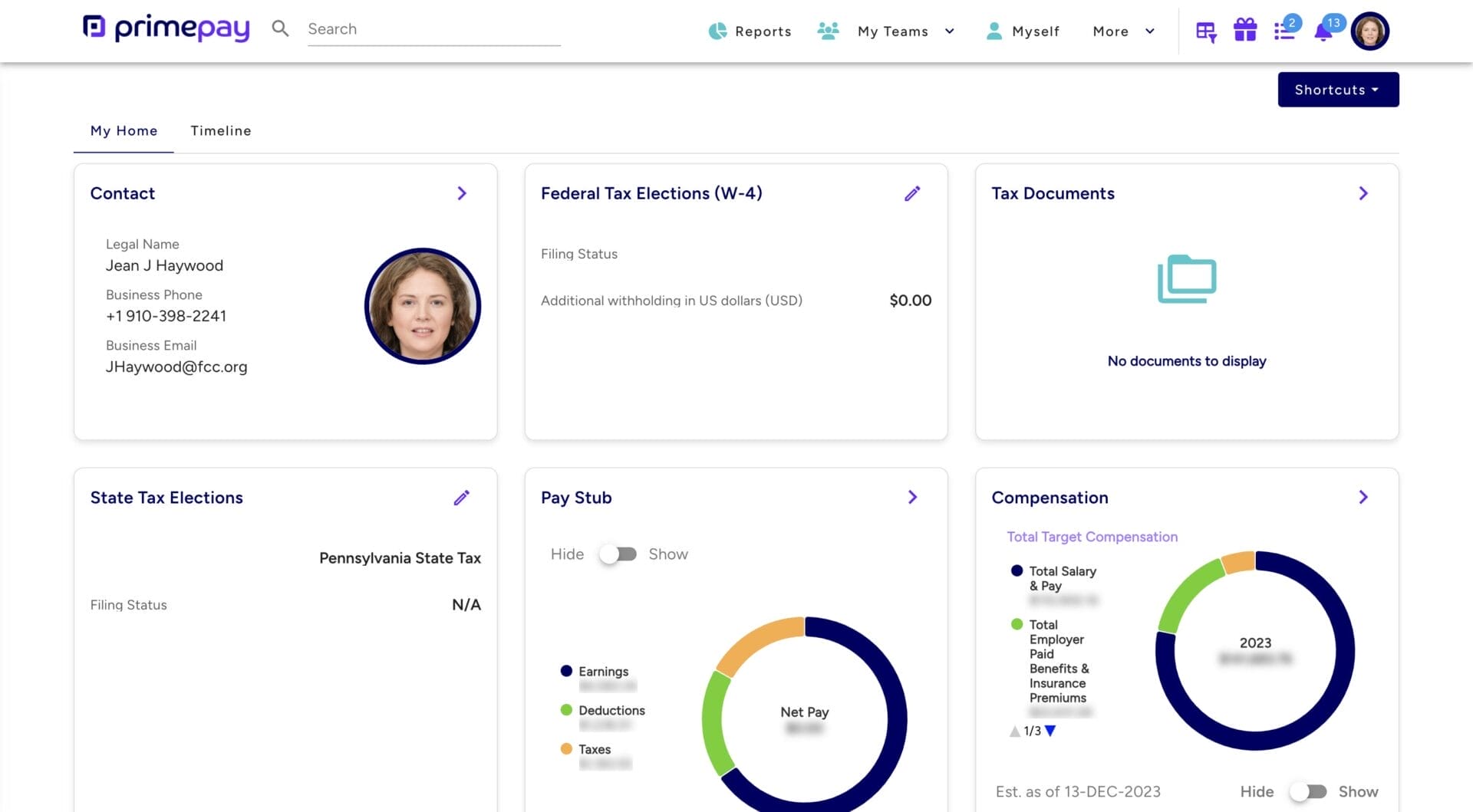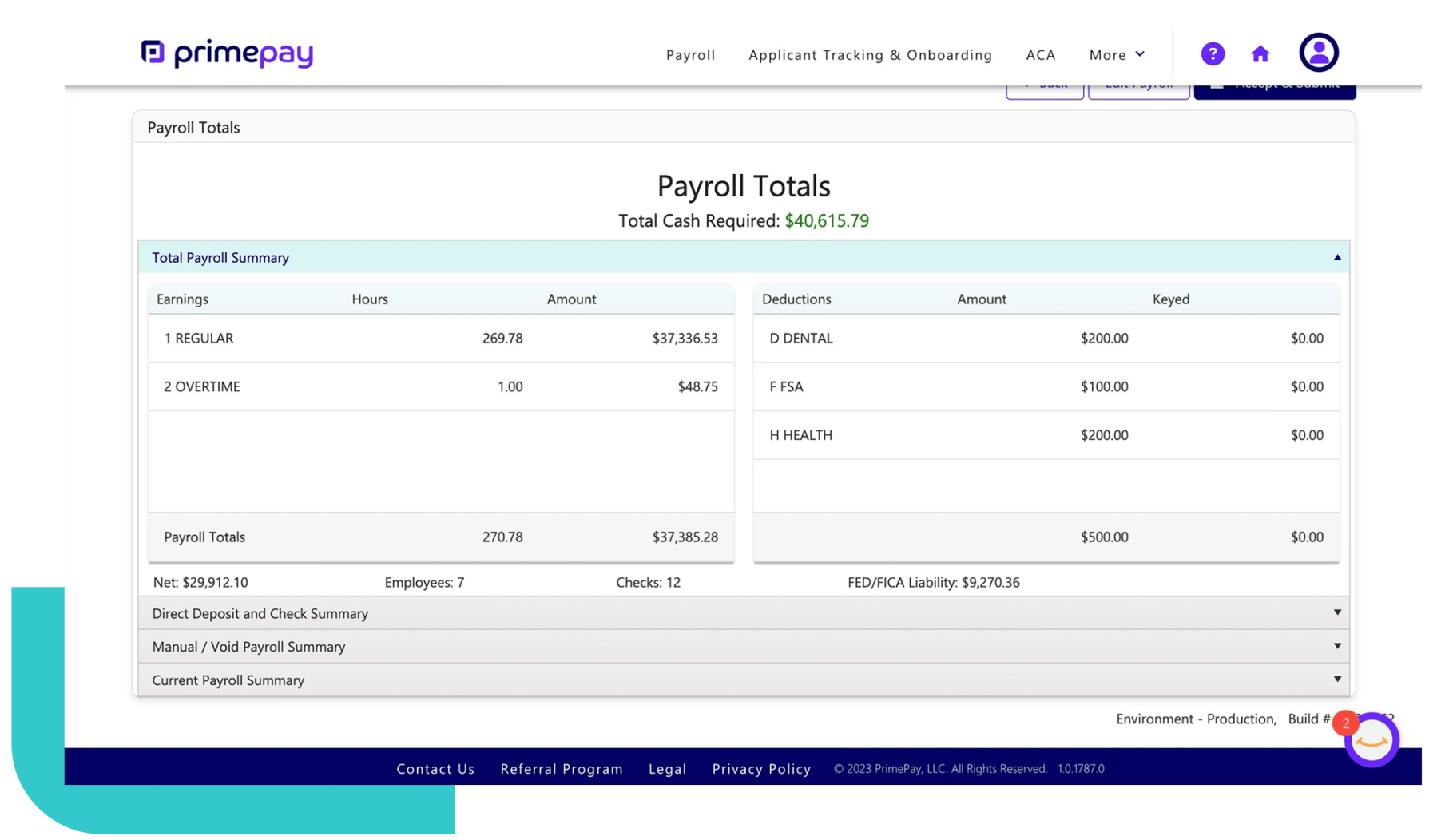Below we discuss employer payroll expenses, the importance of employee classification, and how to calculate and organize payroll expenses to help you budget and meet tax requirements.
What Are Payroll Expenses?
Payroll expenses are the costs a business makes to pay its workforce. This can include base salaries and hourly wages, employer‐paid taxes and contributions (such as Social Security and unemployment insurance), fringe benefits like health coverage and retirement plans, overtime premiums, and incentive‐based pay—bonuses, commissions, and other performance rewards.
True story: Years ago, a newly-formed business called our Customer Service frantically. They said too much money was pulled from their account on payday. The issue? The owners forgot that there were other mandatory costs (beyond employee salaries) when running payroll – and didn’t budget appropriately.
Below is a breakdown of key employer payroll expenses to help you plan and budget.
Gross Wages and Salaries
The foundation of payroll expenses is the gross wage—what an employee earns before any taxes or deductions. Gross wages include hourly pay, salaries, bonuses, and commissions. Employers calculate gross wages as the base amount before factoring in deductions.
Federal Income Tax Withholding
Employers are required to withhold federal income tax from employee wages. The amount depends on the employee’s filing status, allowances, and earnings. Federal withholding keeps businesses compliant with tax regulations and helps employees meet their income tax obligations throughout the year.
State Income Tax Withholding
Many states require employers to withhold state income taxes as well. Rates and regulations vary, so staying updated on each state’s requirements is essential if your business operates across multiple states.
FICA (Federal Insurance Contributions Act)
FICA covers Social Security and Medicare taxes. Both employers and employees contribute to FICA. The current rate is 7.65% of an employee’s gross wages (6.2% for Social Security and 1.45% for Medicare), with employers matching the amount.
FUTA (Federal Unemployment Tax Act)
FUTA funds federal unemployment programs, providing temporary income for eligible employees who lose their jobs. Employers typically pay FUTA at a rate of 6% on the first $7,000 of each employee’s earnings, though credits can reduce this rate.
SUTA (State Unemployment Tax Act)
Similar to FUTA, SUTA contributions fund state unemployment benefits. Rates and wage bases differ by state, so employers should check their state’s requirements to calculate the exact amount.
Employee vs. Contractor Payroll Reporting
Understanding the difference between employees and contractors is necessary for day-to-day management because it directly impacts your payroll reporting, taxes, and compliance. Compliance is crucial since misclassification can lead to significant penalties and back taxes – something every organization wants to avoid.
Employers must handle payroll reporting for employees and contractors differently, as the IRS and state tax agencies view these classifications as having distinct obligations.
Employees
Companies are responsible for managing a range of deductions and taxes, from federal and state income tax withholdings to Social Security and Medicare contributions. Employers withhold these amounts from employee paychecks and also match FICA contributions.
Each payroll cycle, these withholdings are reported to the IRS through payroll tax filings, such as Form 941 for federal income tax and FICA, and deposited according to federal and state guidelines. At the end of the year, employers must provide employees with a W-2 form summarizing annual earnings, taxes withheld, and FICA contributions.
Contractors
Contractors aren’t subject to the same withholding requirements since they’re considered self-employed.
Rather than deducting taxes from payments to contractors, employers simply report the total payments made to each contractor on Form 1099-NEC, which is submitted to the IRS and provided to the contractor by the end of January each year.
Contractors are responsible for handling their own tax payments, which include income tax and self-employment tax, covering both the employer and employee portions of Social Security and Medicare.
How to Calculate Payroll Expenses
Calculating payroll expenses accurately involves a detailed, step-by-step approach to ensure you meet tax and compliance requirements. Let’s walk through each step:
1. Have Employees Complete a W-4 Form
Begin by having each employee fill out a W-4 form upon hiring. This form provides essential information for determining federal income tax withholding, such as the employee’s filing status (e.g., single, married, head of household) and any additional withholding amounts they may request.
Review W-4s regularly, especially if employees experience life changes—like marriage or dependents—that could impact their withholding. Using the information on the W-4, employers can calculate how much federal income tax to withhold from each paycheck.

Many employers use self-service portals during employee orientation to guide new hires through mandatory filings and company training.
2. Determine Gross Pay
Gross pay is the total amount an employee earns before any deductions are taken out.
For hourly employees, gross pay is calculated by multiplying hours worked by their hourly wage, including any overtime or shift differentials.
For salaried employees, the agreed-upon annual salary is divided by the number of pay periods.
Gross pay may also include bonuses, commissions, and other types of additional compensation. Triple-check your calculations, since gross pay impacts all subsequent payroll calculations.
3. Calculate Net Pay
Once gross pay is determined, it’s time to calculate net pay, which is the actual amount the employee will receive after deductions.
- First, subtract federal and state income tax withholdings based on the employee’s W-4 information.
- Then, deduct FICA contributions (Social Security and Medicare), which are shared between the employee and employer. Other deductions, such as retirement contributions, health insurance premiums, and any garnishments, are also subtracted.
- The remaining amount after all deductions is the employee’s net pay, or “take-home pay.”
4. Submit Tax Deposits
After calculating net pay, employers must submit payroll tax deposits to the IRS and any relevant state tax agencies. These deposits cover income tax withholdings, FICA contributions, and other required taxes.
Tax deposits are due on different schedules—weekly, bi-weekly, monthly, or quarterly—based on the business’s total tax liability.
Staying on top of deposit schedules is crucial, as late deposits can result in fines or penalties. The IRS typically requires electronic deposits, which can simplify the process and keep records more organized.
5. Complete Tax Forms
Employers must file various payroll tax forms with federal, state, and local tax authorities throughout the year. Make sure you know which your company is subject to!
Businesses commonly submit IRS Form 941 quarterly to report income tax withholdings and FICA contributions. Some states have similar forms and deadlines for state income tax withholdings.
At the end of the year, employers must provide each employee with a W-2 form summarizing their annual wages and withholdings, which is also filed with the Social Security Administration. For contractors, a Form 1099-NEC is completed and submitted instead. Note that maintaining accuracy on these forms is essential, and errors can trigger costly audits.
6. Notify Employees of Their Pay Amount
Once payroll is finalized, it’s time to issue paychecks or direct deposits. Employees should receive a pay stub or earnings statement detailing their gross pay, deductions, and net pay.
This breakdown helps employees understand how their pay was calculated and can reduce questions or confusion regarding withholdings or deductions. Digital or paper statements work, though many businesses prefer electronic pay stubs for convenience.

The right payroll software allows you to run payroll easily and automatically deduct taxes and withholdings for you.
7. Keep Payroll Records Filed
Most business owners, HR leaders, and Finance teams know how important it is to document everything. The same goes for retaining payroll records, which are essential for compliance, auditing, and internal reviews. When evaluating payroll systems you want to make sure that there is a solid feature that will support your payroll expense documentation.
Following IRS and state guidelines, employers must keep detailed records of all payroll transactions, including gross pay, deductions, net pay, and tax filings.
Generally, payroll records should be kept for at least three to seven years, depending on the document type. Proper recordkeeping safeguards your business during audits and helps ensure that future payroll calculations are consistent and accurate.
How to Categorize Payroll Expenses
Imagine a clean, organized financial record folder (paper or digital – your choice) where you can easily track allocated funds and budget for the future. Doesn’t that sound nice?
Preparing and categorizing your payroll expenses is the most laborious part; after it’s set up, it’s smooth sailing.
Most businesses categorize payroll into two main types: direct labor costs and indirect labor costs:
- Direct labor costs include wages and salaries for employees directly involved in producing goods or services.
- Indirect labor costs cover wages for support staff, such as administrative and human resources teams, who aren’t directly tied to production.
Beyond labor, payroll expenses should account for employer taxes, including FICA, FUTA, and SUTA. These expenses are often grouped under “payroll taxes” in the financial ledger, helping distinguish them from gross wages.
Benefits like health insurance, retirement contributions, and paid leave are separate categories. Recording these items independently provides a clearer picture of total compensation costs, which can be crucial for budgeting and financial planning.
Finally, categorizing expenses by department, project, or location can add further clarity.
Breaking down payroll costs this way allows businesses to see the labor investment associated with each team or project. This insight helps leaders make strategic decisions, such as adjusting budgets or staffing levels, and is especially valuable when seeking organizational efficiencies.


